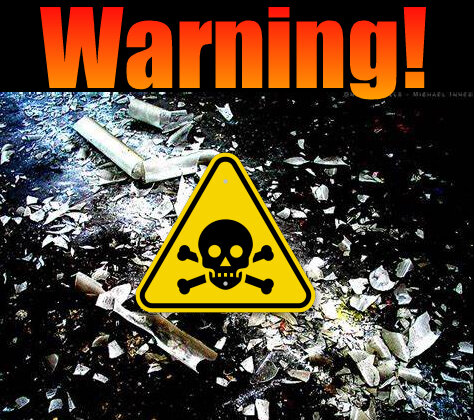A Warning About Handling Broken Fluorescent Light Tubes
/IS YOUR FACILITY AT RISK? HERE’S WHAT YOU NEED TO KNOW…
If your facility is still using compact fluorescent lighting, pay close attention and heed my advice. I want to save you from the frustration of a potential money-draining headache by offering a strong word of warning concerning their use.
Fluorescent light tubes are outdated. While it is common knowledge that they consume an enormous amount of excess energy that wrecks your utility budget, they also present a serious health threat to human beings, animals, and the environment when they are broken.
As most of you know, these light tubes contain mercury. When broken, they can release dust and vapors that contain enough mercury to present a significant health risk. Mercury is a dangerous heavy metal that is carcinogenic, and it can easily migrate into the environment contaminating the air, water, and also soil.
I have witnessed many facilities that do not abide by the EPA recommendations for cleanup when a light tube or CFL bulb breaks, and this is something that can trigger corrective actions on the part of regulators.
Notices of violations and fines can be imposed if an inspector finds evidence that a facility does not follow the proper safety guidelines when bulbs are broken, and this is something they are trained to look out for when performing inspections.
If you don’t have a written contingency plan contained in your standard operating procedures, you run the risk of getting into hot water with the EPA, the DNR, and also OSHA. Many facility managers and safety personnel are not even aware of the recommended steps that are to be taken in the event of a broken bulb.
The following short summary can be used to write your own standard operating procedure to educate employees and managers who handle fluorescent bulbs for replacement, or those who operate equipment that can cause bulbs in use to be broken.
What To Do When A Bulb Breaks
Evacuate all people from the room.
Allow at least 5 to 10 minutes of airing out by opening a window or door.
Shut off the central forced air from your HVAC system.
Use sticky tape to pick up the small glass shards from the area, and use a stiff piece of paper or cardboard to collect the larger glass pieces.
Use damp paper towels or disposable wet wipes to clean the floor and all hard surfaces that are affected.
Place the broken glass, sticky tape, and cardboard into a glass jar or heavy plastic bag.
ALL cleanup materials and waste should be finally placed into a sealable container appropriate for hazardous materials in order to carry out proper disposal.
Contact your authorized hazardous materials disposal company about picking up the sealed containers.
If it is practical, you should continue to allow the room to be aired out for several hours and leave the HVAC system shut off during this time.
Another important word of advice, do not vacuum or sweep up the glass! Vacuuming and sweeping will spread the mercury-containing powder and vapors that have escaped from within the bulb. This is not a safe cleanup method. It will also contaminate any equipment used.
It is best to plan ahead to prevent these small incidents that can lead to wasting thousands of dollars in OSHA or EPA fines. Careful planning will also help reduce the chances of exposing workers to mercury poisoning. An ounce of prevention is definitely worth a pound of unnecessary suffering.
If you really want to be proactive, he most responsible plan of action is to not have these mercury-containing bulbs in your facility at all. In this day and age, there is no logical reason to continue the risk of using fluorescent light tubes. Furthermore, there are no financial advantages to running out the life of your current fluorescent lighting if they still exist in your buildings.
Stay tuned for my next article which will prove to you why you are wasting more money than you are saving by not proactively replacing ALL of your fluorescent lighting. You will be surprised at what you learn with this information!
Carlton Flowers
Carlton’s Industry List
